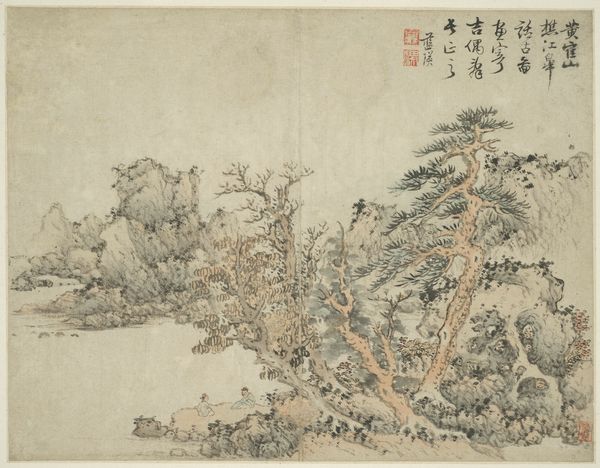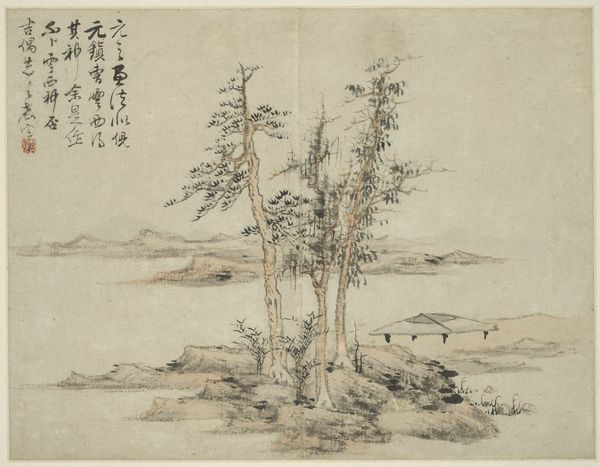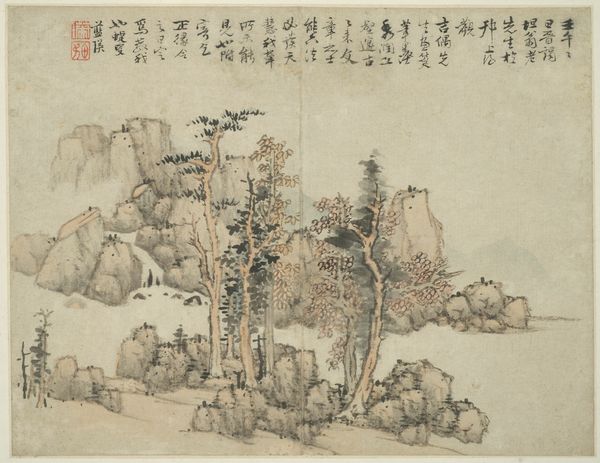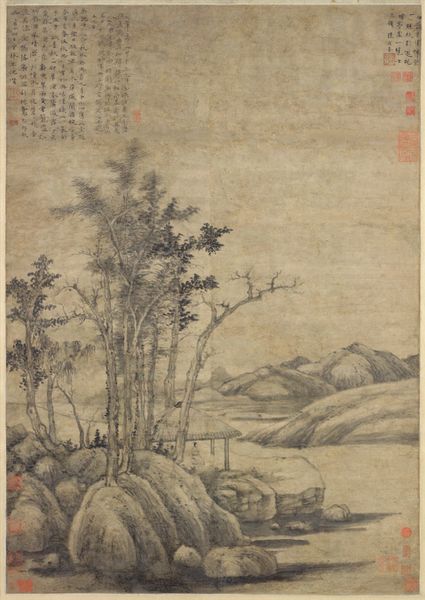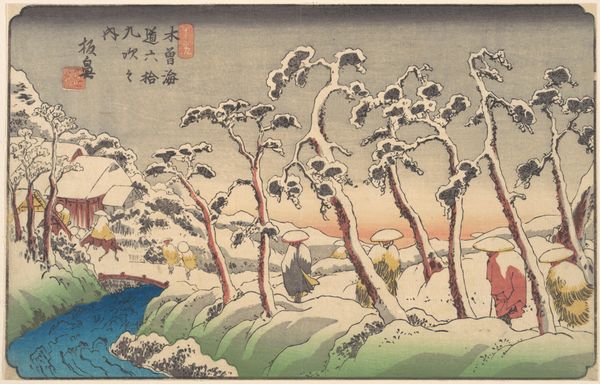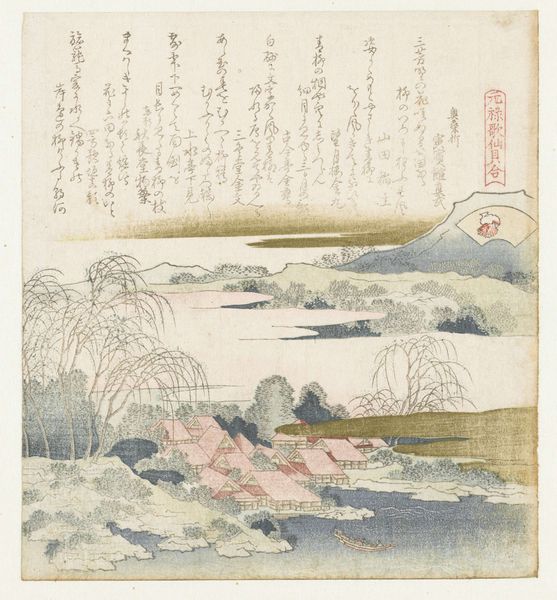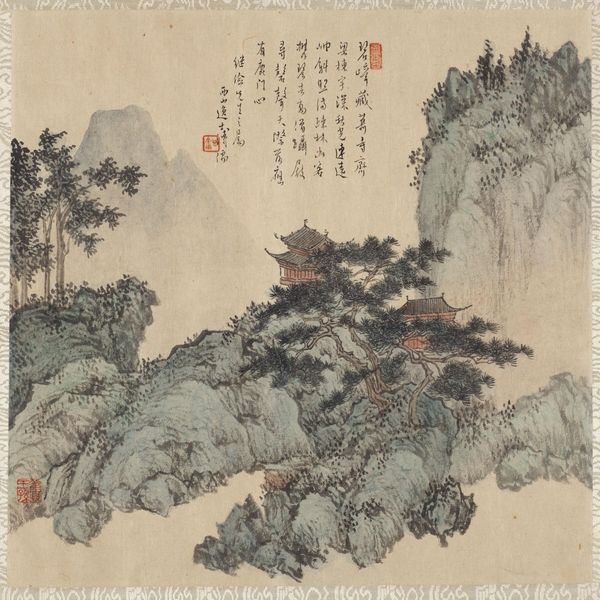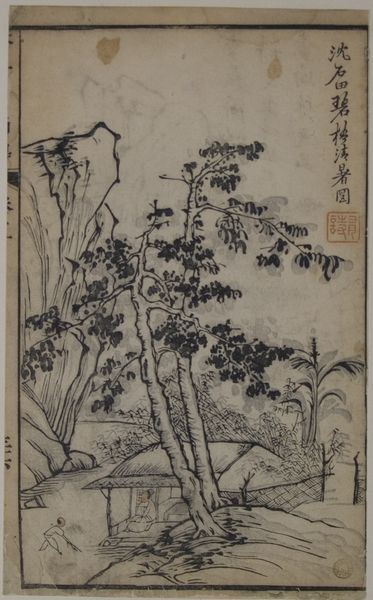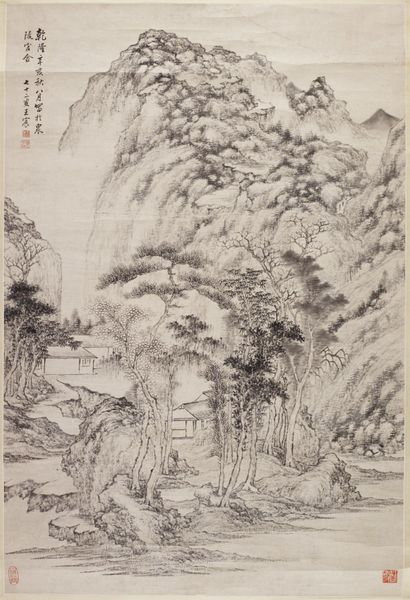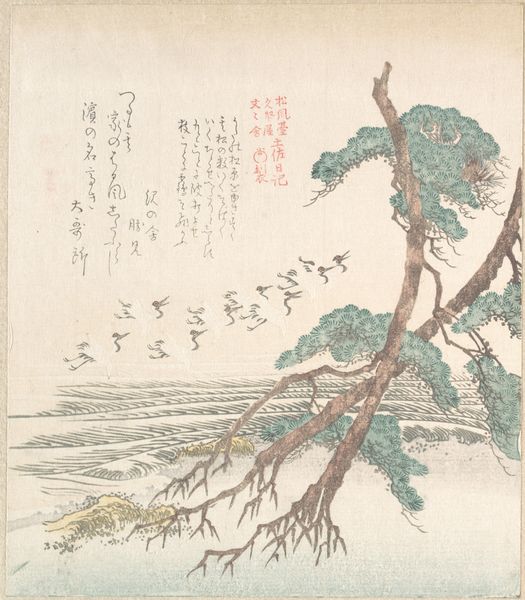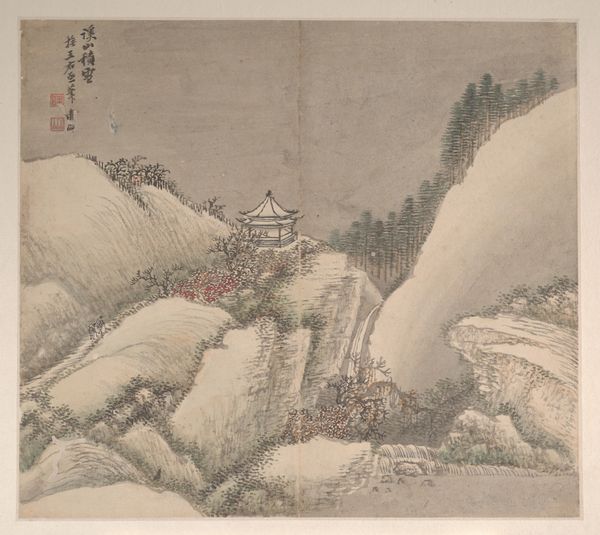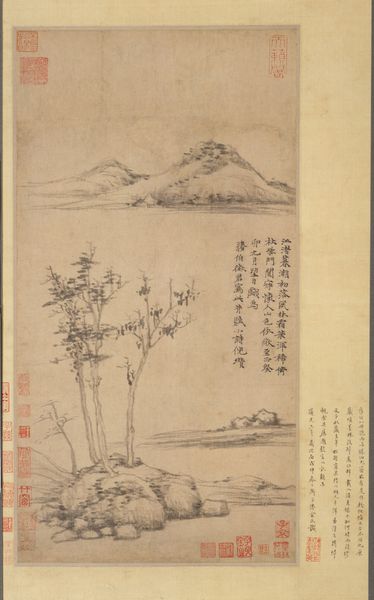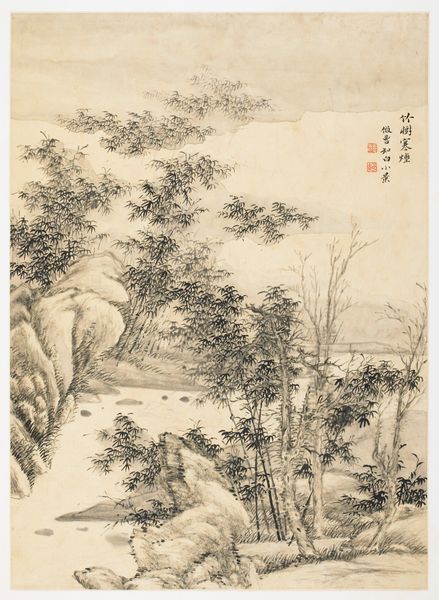
painting, watercolor, ink
#
tree
#
landscape illustration sketch
#
ink painting
#
painting
#
asian-art
#
landscape
#
22_ming-dynasty-1368-1644
#
watercolor
#
ink
#
orientalism
#
china
#
calligraphy
Dimensions: 12 7/16 x 9 3/4 in. (31.6 x 24.8 cm)
Copyright: Public Domain
Curator: This delicate watercolor and ink piece, dating to 1642, is titled "Landscapes after Song and Yuan masters," attributed to Lan Ying, now held at The Met. What strikes you initially? Editor: There’s a wistful quietness to it. A group of elegant trees dominate, with that faded ink wash giving everything a soft, almost dreamlike quality. Curator: It's fascinating that you perceive quietness, given its engagement with art history. Lan Ying created this during a turbulent period, the late Ming Dynasty. This painting directly references artistic giants of the Song and Yuan dynasties as a gesture of cultural continuity, of artistic lineage. It's a deliberate echo of a more idealized past, when the empire was not collapsing. Editor: Absolutely, I see the yearning in that echo. The very act of emulating those earlier styles becomes a symbolic refuge. The landscape isn't just trees and mountains; it’s a remembered ideal. Look at the figures, minute against the landscape – it really amplifies that idea of human existence measured against time. Curator: Indeed, and it raises questions about the function of art during a period of perceived decline. The stylistic quotation is also, essentially, a claim. It suggests the enduring importance and validity of those earlier forms of painting and art more generally amid cultural distress. We see the cultural authority of the artistic lineage presented so strongly. Editor: Do you think the very sparseness and lack of strong color also play into that sense of wistful remembrance? A full-blown, vibrant celebration would feel almost inappropriate given the context. This feels like a tender recollection, muted in its palette but full of quiet, considered gestures. The composition suggests a traditional motif of scholar-artists who retreat to the studio to avoid being political engaged in the state’s difficulties. Curator: Precisely. It's a statement made through understatement. That resonates deeply within a complex society at the crossroads. And those motifs are also political gestures through visual forms. Editor: So it's much more than just a landscape – it is a symbol laden statement reflecting on both individual identity and collective anxieties. The painting then acts as almost a form of meditative historical practice. Curator: Precisely! That kind of art historical symbolism embedded is what fascinates me in considering the history surrounding its production.
Comments
No comments
Be the first to comment and join the conversation on the ultimate creative platform.
